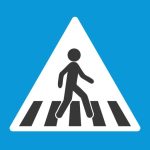Breakthroughs in Focused Ultrasound As Addiction Treatment

Sometimes, it seems like it’s impossible to isolate all the factors that contribute to addiction so that they can individually be treated or repaired. Medication for addiction is successful in reducing cravings and withdrawal pains in the short run, but readdiction is common, with or without the medication.
Cognitive behavioral therapy, or CBT, has a better long-term track record than medication. CBT is a broad tent, including talk therapy one-on-one with a psychiatrist or psychologist, group therapy sessions, support groups, study programs, and smartphone applications. Without some change in mental attitude, some retraining away from the addictive impulse, medication alone is unlikely to work. Most people who are addicted are able to eventually become unaddicted without medication.
Suddenly, there is a new contender in the treatment of addiction: focused ultrasound. It’s the subject of a deep dive feature in The Wall Street Journal by crime reporter turned health reporter, Julie Wernau. The WSJ article centers around the work of Dr. Ali Rezai at the Rockefeller Neuroscience Institute (RNI) at West Virginia University. According to Wernau, Dr. Rezai and his team are…
monitoring the heart rates, emotions, sleep and cravings of thousands of drug users who are helping to train artificial intelligence to predict a relapse before it occurs, so that recovery coaches can intervene.
RNI is putting the intelligence into at-home addiction treatment programs that provide instant online access to medical professionals in the event of an emergency situation. In many cases, the smartphone services can prescribe medications, connect the patient with a licensed therapist, or provide other assistance such as locating a treatment facility or support groups.
In trials at the RNI, ultrasound waves are focused on the nucleus accumbens, part of the brain’s reward system whose normal operation is damaged by addiction. When stimulated with images and cues of substance abuse, the nucleus accumbens of an addict in recovery usually gets hyperactive, generating cravings, salivating, and urges that are hard to resist. Hit the nucleus accumbens with a blast of ultrasound and the cravings vanish, according to one first-hand account relayed in WSJ. Wernau explains:
He was the third patient to participate in an ongoing blinded, randomized clinical trial for the procedure, with support from the National Institutes of Health. This 30-patient trial follows promising results from an earlier trial of 20 patients who were aware of the treatment protocol they received. Patients who had spent much of their lives using drugs saw their cravings drop to near zero. About three-quarters of participants remained substance-free several months later.
Dr. Rezai is not the only one showing progress in treating addiction with focused ultrasound. Our own Pat Hartman wrote about Dr. Hong Chen and her team at the Chen Ultrasound Laboratory at Washington University in St. Louis, Missouri, who are developing wearable focused ultrasound hats to blast away those pesky cravings.
And I’ve written about the work of Dr. Brian J. Mickey in the Neuroscience Program at the University of Utah. The recipient of a Wellcome Leap grant, Dr. Mickey is using focused ultrasound to repair brain damage resulting from opioid addiction. Remarkable results have been reported in small tests of low-intensity focused ultrasound, with self-reported cravings dropping by 50% to 100%.
We are right on top of this story at AddictionNews and look forward to bringing you updates on the use of focused ultrasound in addiction treatment.
Written by Steve O’Keefe. First published October 31, 2024.
Sources:
“Can Zapping the Brain Help Treat Addiction?” The Wall Street Journal, October 29, 2024.
“A Pathway Out of Addiction?” Addiction News, June 21, 2024.
“Can Addiction Be Treated With Low-Intensity Focused Ultrasound?” Addiction News, April 29, 2024.
Image courtesy Wikimedia Commons, used under Creative Commons license.




